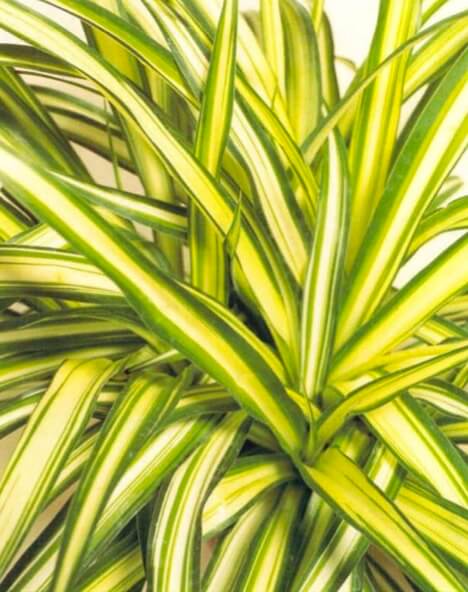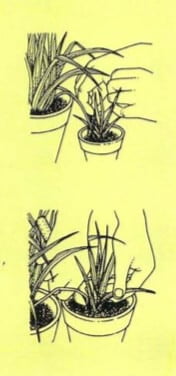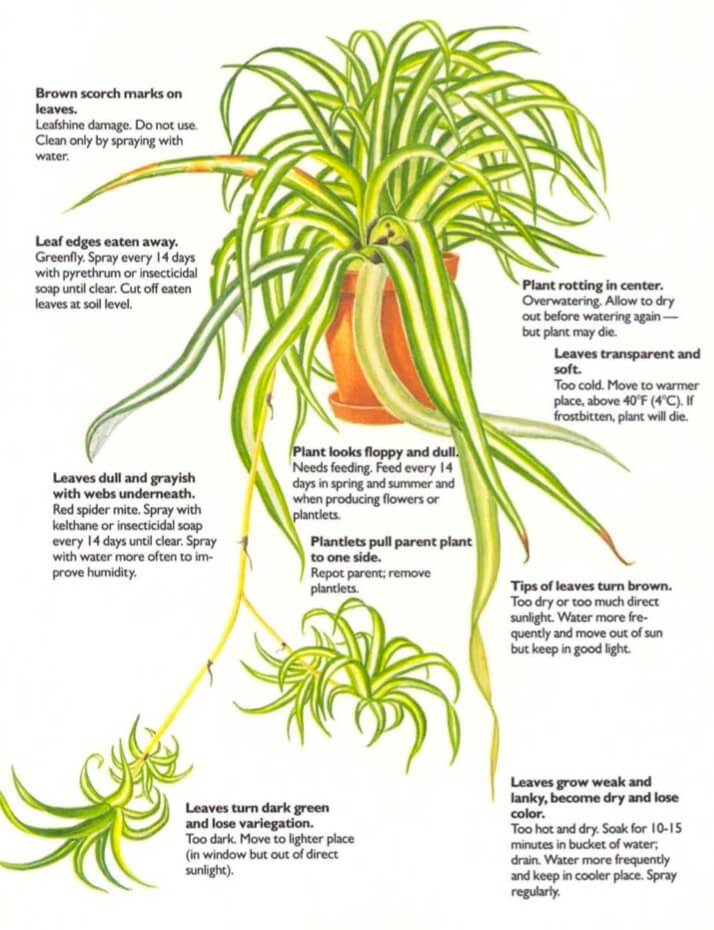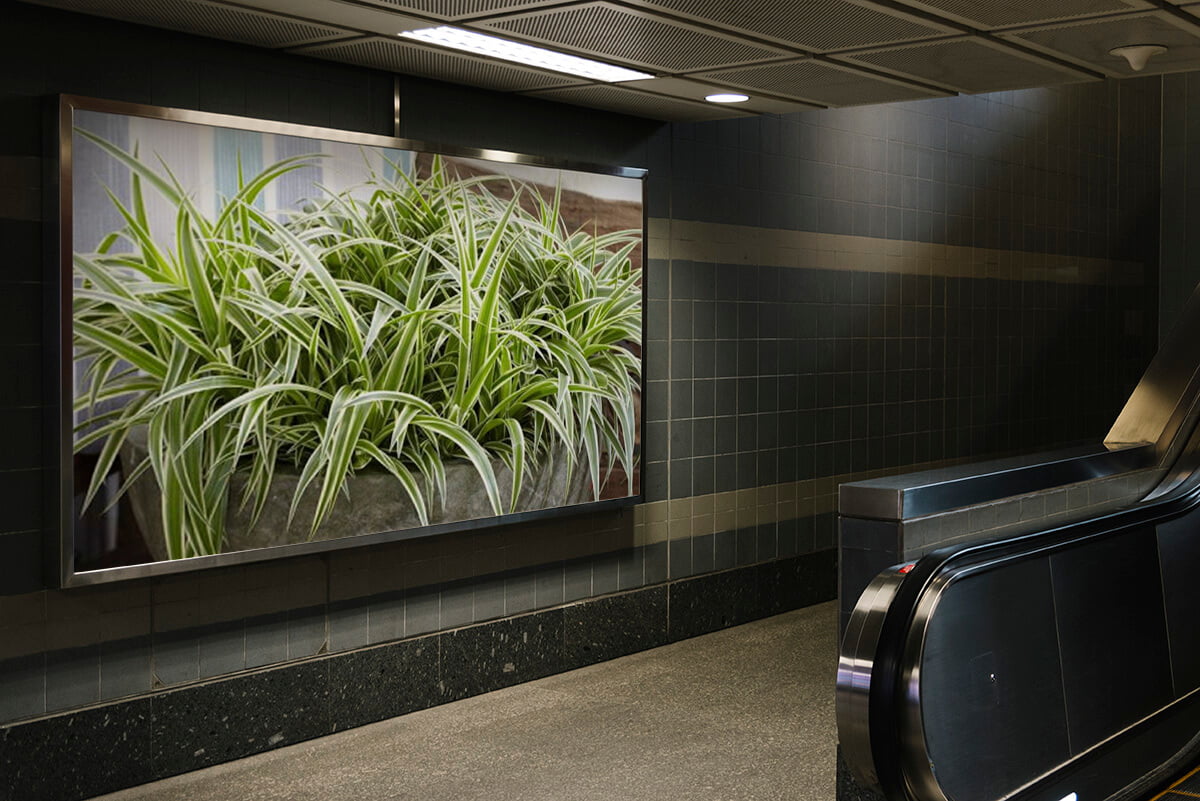[Ebook Việt Hoá] The Instant Guide to Healthy Houseplants (Hướng dẫn tức thời để chăm cây trong nhà khoẻ mạnh), Chi Chlorophytum - Chi Dây Nhện
[Ebook Việt Hoá] The Instant Guide to Healthy Houseplants: Chlorophytum comosum (Spider plant, Cây Nhện, Cỏ Lan Chi, Cây Nhảy Dù, Cây Mẫu Tử)
- Nguồn: [Ebook Việt Hoá] The Instant Guide to Healthy Houseplants (Hướng dẫn tức thời để chăm cây trong nhà khoẻ mạnh)
- Biên tập: Dũng Cá Xinh
- Biên dịch: Team Codai.net
English
This is a wonderful plant for beginners only outright neglect will kill it. It is a very quick grower, with long, straplike leaves coming from its center. The spider plant is particularly attractive in hanging baskets , as it throws out long stems that produce, first, small flowers and, then, decorative hanging plantlets. Young plants, which can easily be grown from these plantlets, can be used for outdoor summer bedding. The plant, which originates from South Africa, grows well in hydroculture. Keep it well fed and potbound. When its stems fill the pot, and when the white, worm like rhizomes bulge out over the surface, it can be divided easily.

Light
Grows in most locations. though its variegation is most pronounced when plant is near a window. Keep away from midday sun.
Temperature
Though very tolerant. plant must be frost-free in winter.
Water
Water 2 – 3 times a week in summer. once a week in winter. Withhold water if temperature drops below 40°F (4°C).
Humidity
Spray daily in summer. twice a week in winter if temperature is over 60°F (16°C).
Feeding
Feed every 14 days in the growing season (spring and summer) with houseplant food diluted according to manufacturer’s instructions.
Soil
Use loam-based soil to give roots a firm hold.
Repotting
Repot about twice a year. though plant does not mind being pot-bound. It is all right to remove some of the fat white tubers. or rhizomes. if they fill surface of pot.
Cleaning
Humidity spraying is sufficient. Use no leafshine.
Separating the plantlets
- 1. Prepare small pots with drainage layer and soil.
- 2. Place new pot next to parent plant and bend stem until plantlet rests on soil. Peg stem to soil and firm latter around plantlet.
- 3. When plantlet grows new leaves, cut parent stem close to, plantlet with sharp knife.

What Goes Wrong

- Brown scorch marks on leaves: Leafshine damage. Do not use. Clean only by spraying with water.
- Leaf edges eaten away: Greenfly. Spray every 14 days with pyrethrum or insecticidal soap until clear. Cut off eaten leaves at soil level.
- Leaves dull and grayish with webs underneath: Red spider mite. Spray with kelthane or insecticidal soap every 14 days until clear. Spray with water more often to improve humidity.
- Plant looks floppy and dull: Needs feeding. Feed every 14 days in spring and summer and when producing flowers or plantlets.
- Plant rotting in center: Overwatering. Allow to dry out before watering again- but plant may die.
- Leaves transparent and soft: Too cold. Move to warmer place. above 40°F WC). If frostbitten. plant will die.
- Tips of leaves turn brown: Too dry or too much direct sunlight. Water more frequently and move out of sun but keep in good light.
- Leaves grow weak and lanky, become dry and lose color: Too hot and dry. Soak for 10-15 minutes in bucket of water; drain. Water more frequently and keep in cooler place. Spray regularly.
- Leaves turn dark green and lose variegation: Too dark. Move to lighter place (in window but out of direct sunlight).
- Plantlets pull parent plant to one side: Repot parent, remove planlets.
Tiếng Việt
Đây là loại cây tuyệt vời dành cho người mới bắt đầu, nó sẽ chỉ có thể chết nếu bạn hoàn toàn bỏ mặc nó. Nó là một loài sinh trưởng rất nhanh, với những chiếc lá dài như những sợi dây mọc từ giữa cây. Cây Lục thảo trổ đặc biệt hấp dẫn trong các giỏ treo, vì nó mọc ra những thân dài, đầu tiên là những bông hoa nhỏ và sau đó là những chậu cây treo trang trí. Những cây non có thể dễ dàng phát triển từ những cây con này và được sử dụng làm chất độn chuồng ngoài trời vào mùa hè. Loại cây này có nguồn gốc từ Nam Phi, phát triển tốt trong môi trường thủy canh. Bón phân cho nó đầy đủ là tốt. Khi thân cây lấp đầy chậu và khi những con sâu trắng như thân rễ phình ra trên bề mặt, nó có thể được chia dễ dàng.

Ánh sáng
Phát triển ở hầu hết các vị trí mặc dù sự biến đổi của nó rõ rệt nhất khi cây ở gần cửa sổ. Tránh ánh nắng giữa trưa.
Nhiệt độ
Mặc dù cây có khả năng thích nghi cao nhưng không nên đặt ngoài sương giá vào mùa đông.
Nước
Tưới nước 2 – 3 lần / tuần vào mùa hè, mỗi tuần một lần vào mùa đông. Dừng tưới nước nếu nhiệt độ giảm xuống dưới 40 ° F (4 ° C).
Độ ẩm
Phun hàng ngày vào mùa hè, hai lần một tuần vào mùa đông nếu nhiệt độ trên 60 ° F (16 ° C).
Bón phân
Bón phân 14 ngày một lần trong mùa sinh trưởng (mùa xuân và mùa hè) bằng phân bón hữu cơ pha loãng theo hướng dẫn của nhà sản xuất.
Đất
Sử dụng đất mùn để giúp rễ bám chắc.
Thay chậu
Thay chậu 2 lần 1 năm, vì cây không có vấn đề với việc thay chậu, do vậy bạn có thể loại bỏ một chút nấm trắng và củ rễ nếu chúng lấp lên đến mặt chậu
Làm sạch
Phun ẩm vừa đủ. Không sử dụng xịt bóng lá.
Tách cây con
- 1. Chuẩn bị chậu nhỏ có lớp thoát nước và đất.
- 2. Đặt chậu mới bên cạnh cây mẹ và uốn cong thân cây cho đến khi cây con nằm trên đất. Gắn thân vào đất và cố định phần sau xung quanh cây con.
- 3. Khi cây con mọc ra lá mới, dùng dao sắc cắt bỏ thân cây bố mẹ ở gần bên.

Những vấn đề có thể xảy ra

- Vết cháy xém nâu trên lá: Hư hại do xịt bóng lá. Không được dùng. Chỉ làm sạch bằng cách xịt với nước.
- Mép lá bị ăn mòn: Ruồi xanh. Xịt 14 ngày một lần với pyrethrum hoặc xà phòng diệt côn trùng cho đến khi khỏi bệnh. Cắt bỏ lá bị ăn ở đất.
- Lá xỉn màu và xám với mạng nhện bên dưới: Mạt nhện đỏ. Xịt kelthane hoặc xà phòng diệt côn trùng 14 ngày một lần cho đến khi sạch. Xịt nước thường xuyên hơn để cải thiện độ ẩm.
- Cây trông mềm và xám xịt: Cần bón phân. Bón phân 14 ngày một lần vào mùa xuân và mùa hè và khi ra hoa hoặc cây con.
- Cây thối rữa ở phần trung tâm: Tưới nước quá mức. Để khô trước khi tưới lại – nhưng cây có thể chết.
- Lá trong suốt và mềm: Quá lạnh. Di chuyển đến nơi ấm áp hơn. trên 40 ° F (4 ° C). Nếu cóng cây sẽ chết.
- Đầu lá chuyển sang màu nâu: Quá khô hoặc quá nhiều ánh nắng trực tiếp. Tưới nước thường xuyên hơn và tránh nắng nhiều nhưng để nơi có ánh sáng tốt.
- Lá phát triển yếu và sần sùi, trở nên khô và phai màu: Quá nóng và khô. Ngâm 10-15 phút trong xô nước; làm khô hạn. Tưới nước thường xuyên hơn và để ở nơi mát hơn. Phun ẩm thường xuyên.
- Lá chuyển sang màu xanh đậm và mất đi độ loang lổ: Quá tối. Di chuyển đến nơi sáng hơn (ở cửa sổ nhưng tránh ánh nắng trực tiếp).
- Cây con kéo cây mẫu sang một bên: Thay cây mẫu, loại bỏ cây con.



